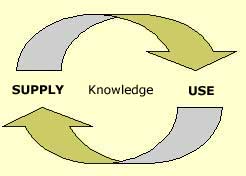
Summer 2003 |
| Ofercat. Indicators of the availability of Catalan: An instrument at the service of language planning, by Mercè Romagosa, Pilar López and Albert Fabà | ||||
| Summary1.
Introduction 1.1 Stages of the Ofercat Project 1.2 What is Ofercat? 1.3 Characteristics 2.
Technical features and methodology 4. Evaluation and prospects for the future Languages need instruments for measuring their vitality and power, and subsequently shaping language policy that will promote them. For that reason, governments adopt such useful tools as census studies, which usually collect information on knowledge of languages. In Catalonia, what’s more, a number of different organisations and institutions, both public and private, carry out surveys among the population to obtain information on language use. This type of information is in fact essential, since the use made by citizens of a language is largely determined by three factors: the knowledge that they have of them, the individual and collective will to use them, and lastly the actual opportunities they have of using them. And these opportunities are conditioned by the language supply, the languages that these citizens have available in a particular territory. This, it is important to adopt tools that will permit one to measure this supply at any one moment and be able to observe the trends apparent in this aspect over time. It is within this context that we present Ofercat, as an instrument that attests the presence or otherwise of the Catalan language in a population. This presence in the public domain can be measured as an outcome of the language offer inhabitants have access to in their everyday lives, both as users of public or private services, and as customers and tax payers - as citizens in fact. What do we mean by language supply or languages on offer? The answer is multiple, but quite simple: can citizens, walking through the city where they live, read signs and notices in the shops in Catalan? Are they attended in Catalan when they telephone a local government department or a service company? Are the forms to renew their identity card in Catalan? Can they see a movie in Catalan or dubbed into Catalan? In short, do the organisations in their city, public or private, large or small, offer them communication in Catalan?
The results obtained by Ofercat are, therefore, a necessary complement to the data on knowledge and use of the language offered by the census, questionnaires and the voting lists or housing registers, and thus can be very useful in the design of language policy by institutions involved in the process. One of the original aspects of Ofercat is that it is not a questionnaire of personal usage with the latter’s subjective answers, but rather an observation of public use of the language based on certain previously selected, objective indicators. And it is not just a study, but rather a systematic tool, easy to operate. In a graphic and entertain way it gives mathematic form to aspects that are otherwise difficult to quantify. 1.1 Stages of the Ofercat Project Ofercat was applied for the first time in 1998 and 1999 in the town of Santa Coloma de Gramenet, on the outskirts of Barcelona. In 1999 this project won the runners-up prize of the Badia i Margarit award for empirical sociolinguistic research, and in the same year a presentation was given in Bilbao at the VII International Conference on Minority Languages. Subsequently, the interest Ofercat generated was gauged, as an electronic tool that can be adapted to different areas and populations, and it was decided to make use of it as a computer application along the lines of Indexplà (see in this issue the article about Indexplà, by Alfred Castells) translated into overall indicators. Furthermore, it was decided that its findings should be displayed in graphs and diagrams that could be used comparatively, comparing graphs across territories, and over time, by sectors and by factors. Accordingly, in 2000 the Ofercat Commission was set up (1), consisting of members of the Consorci per a la Normalització Lingüística (Consortium for Language Normalisation) and the Institute of Catalan Sociolinguistics (ISC) of the Directorate General for Language Policy, the latter being responsible for the development of the tool, for the IT applications and for the manuals and handbooks. In 2001 the tool was piloted to find out how effective it was in different types of settlements. Five districts were chosen based on the linguistic coefficient derived from the 1996 census, the main economic activity of the settlements (tourist areas, rural areas) and the associated population density. The aim was to have represented the diversity of the overall territory, bearing in mind, additionally, that these were settlements for which other data was available (studies of signs and labels, surveys etc.). Finally the following settlements were chosen: Tarragona, Manresa, Tremp, Lloret de Mar and Barcelona old city (Ciutat Vella). In 2002 the pilot study results were made use of, there was the first public presentation at the World Congress on Language Policies and the final touches were put to the IT tool, which would permit the application of the consolidated Ofercat product to Lleida, Reus, Olot, Sabadell and Santa Coloma de Gramenet, in 2003. Ofercat is a methodological, IT tool that gauges the supply of Catalan in any Catalan-speaking population. Using a series of indicators, Ofercat enables us to take a snapshot -at a particular point in time- of the degree and extent of the presence of Catalan in a given territory. This measurement can be taken at intervals when changes in the situation are suspected.
Ambits, subsectors and sectors observed
|
